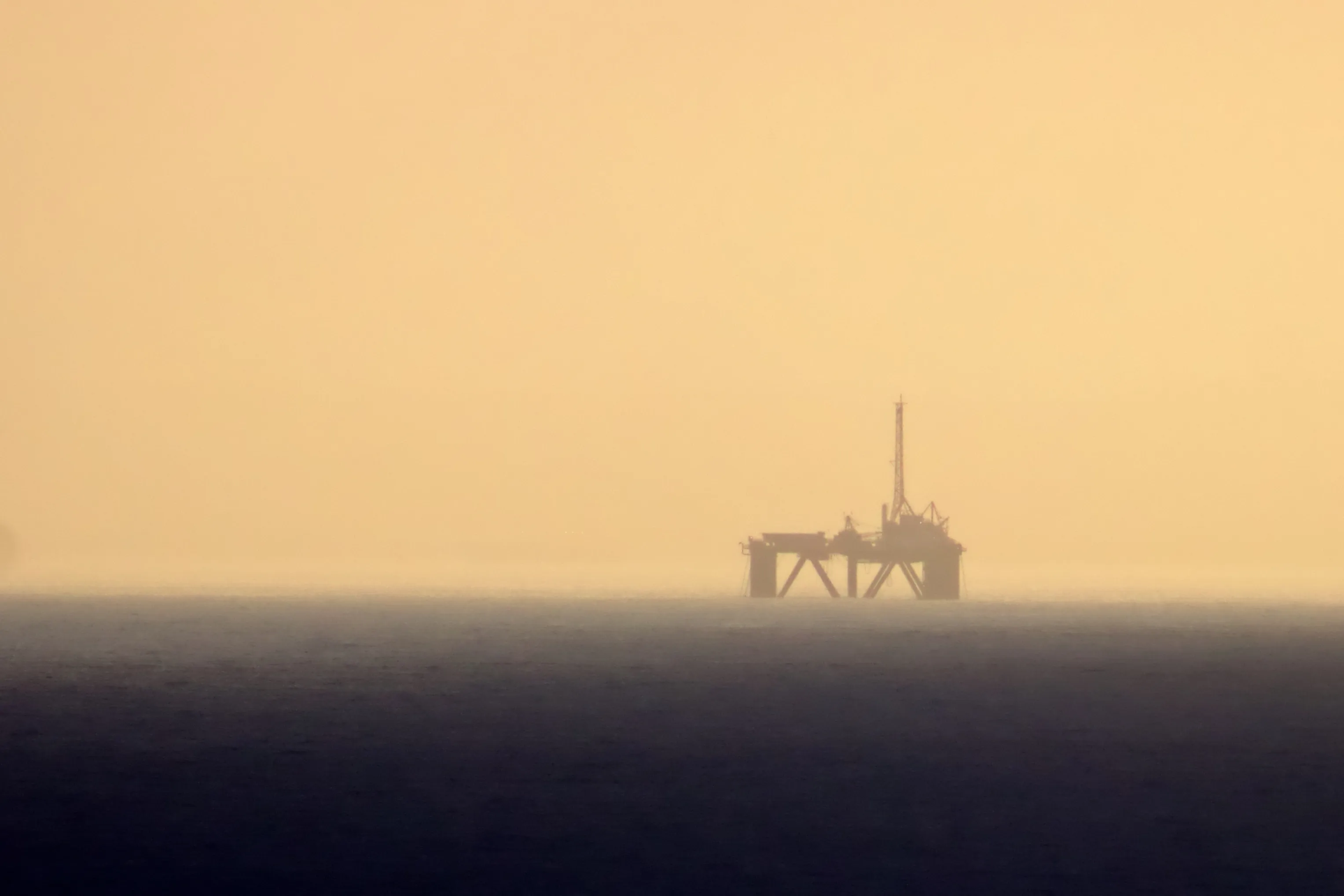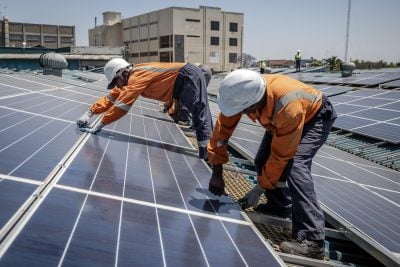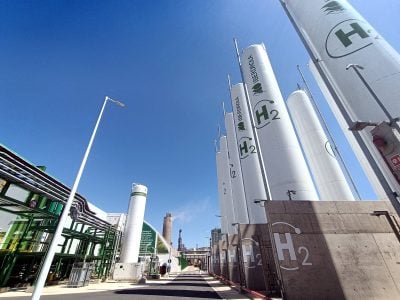Store frozen water, store boiled water, keep your phone fully charged and prepare meals in advance. These are just a few of the instructions for household customers of Eskom, South Africa’s main electricity generator.
Planned power outages have been a fact of South African life for the past 15 years, but in 2021 the country experienced “load shedding” for 13% of the time. Over the same 15 years, the average price of electricity has tripled (on an inflation-adjusted basis). South Africa’s electricity users are paying more and more for a worse and worse service.
The knock-on effects for business and the economy have been dire. In 2021, the business consultants PwC estimated that electricity load shedding had reduced GDP growth by three percentage points – and cost the country 350,000 potential jobs. In the second quarter of 2022, when Eskom implemented load shedding for more than half the period, GDP decreased by 0.7%.
The electricity crisis is both a problem and an opportunity for energy investors in the country. In the short term, business operations face challenges, but in the medium to long term the demand for new sources of electricity generation clearly exists.
While the problems at Eskom are many and varied – including years of bad management, limited generating capacity, poor infrastructure and a reliance on dirty coal, some believe that concentrating on domestic hydrocarbon production will give the domestic electricity industry a boost.
“I’m very positive. I know it’s going to take a few years to develop fully but I’m very positive that it’s going to happen,” says Adrian Strydom, executive director of the South African Oil & Gas Alliance.
Huge opportunities in gas
At present 83% of South Africa’s electricity is generated from coal, according to Eskom. Since replacing coal with gas cuts carbon emissions in half per unit of electricity generated, there are “huge opportunities” for indigenous gas as a transition fuel, according to Strydom. “Gas is part of the energy mix at least until the 2050s,” he predicts.
Natural gas provided just 3% of the country’s total primary energy supply in 2018 (the last year for which government figures are available). Annual consumption, fed by pipeline from the Pande and Temane fields in Mozambique, runs at around 2.6 trillion cubic feet (tcf) according to the latest government energy sector report.
Most of this is used by the petrochemicals industry. However, the Industrial Gas Users Association of South Africa, a trade body, is loudly warning of an imminent “gas cliff”. The rapid depletion of these two Mozambican fields means “the gas energy sector is in decline and will see a significant decline in 2024/25” with impacts for the entire sector.
In theory, the answers to all these problems lie within South Africa’s territory. In July 2022, Bongani Sayidini, head of the Petroleum Agency of South Africa, suggested the country’s total hydrocarbon resources could amount to 291 tcf of gas and 27bn barrels of oil. Some 232 tcf of this potential is onshore, mostly as shale gas in the Karoo region, with the remainder located offshore.
Off the west coast, the Orange basin, where Eco Atlantic is exploring, could host 22 tcf. Off the south coast, where TotalEnergies is active, a further 29 tcf could be exploitable, and the east coast, where Impact and Shell have acreage, offers another 8 tcf, according to the agency boss.
However, Saliem Fakir of the Cape Town-based African Climate Foundation disagrees. “There is a tendency to play up the potential, but we don’t really know what the economical recoverable well-head costs are likely to be,” he says. “More exploration/drilling/production wells need to be tested to know whether they are competitive sources.” Just 4.5 tcf of offshore gas has been confirmed so far, according to Sayidini.
Apart from the ongoing problems with electricity supplies, oil and gas companies in South Africa are also facing legal and political challenges from environmental organisations. In July 2022, Shell’s seismic exploration off the country’s southeastern coast was halted after a coalition of non-governmental organisations convinced a court that the company had not properly consulted local people about its plans. Shell is currently considering its options.
“Just energy transition”
Broader environmental concerns about the viability of developing new hydrocarbon resources while governments are trying to reduce carbon emissions are also casting a shadow over plans. South Africa is the only country to have agreed a “just energy transition” strategy with the EU, the UK and the US.
Announced at the Cop26 summit in Glasgow last November, the $8.5bn strategy is intended “to support South Africa’s pathway to low emissions and climate resilient development”. But this is likely to take 30 years, according to a study by researchers at Stellenbosch University. Strydom says he is confident that the transition process will not stop the development of South African oil and gas.
Regulatory framework
Strydom’s other concern is that South Africa has been slow to develop a regulatory framework for oil and gas exploration. However, recent offshore discoveries have spurred the government into action. Strydom is confident that new legislation will be approved this year, providing investors with regulatory certainty for new developments.
Currently, South Africa imports almost all its oil, chiefly from Saudi Arabia, Nigeria and Angola. If the Petroleum Agency’s estimates prove accurate, that could – in theory – be replaced with indigenous production. In his July remarks, Sayidini suggested that the Orange Basin may hold 16bn barrels, the southern coast around 9bn and the east coast around 2bn.
The question facing investors is whether local oil could be produced more cheaply than imported supplies. This question will become more acute if global prices fall if, for example, consumers switch to electric vehicles in sufficient numbers. “This will advantage low-cost producers and if domestic oil sources are not competitive – high cost producing wells may well lead to oil being unextracted,” Fakir of the African Climate Foundation points out.
Economics may be just one part of the picture, however. South Africa has one of the highest rates of unemployment in the world, currently around 33%. With the government facing severe criticism for failing to reduce these numbers, it is under pressure to facilitate industrial development. One way to do so will be to encourage oil and gas development.
Namibia could become exporter
Neighbouring Namibia has drawn plenty of attention in recent months following major announcements by TotalEnergies and Shell. Two deepwater discoveries, Shell’s Graff field, thought to contain up to half a billion barrels of oil and associated gas, and TotalEnergies’ Venus field, which appears to hold at least 3bn barrels, could be game changers for Namibia.
With a much smaller population, Namibia has tiny domestic markets for oil and gas and weak infrastructure. Everything depends on whether export facilities can be constructed to time and budget. The country is also facing a narrowing time window. TotalEnergies’ deputy director for Africa, Emmanuelle Tutenuit, told a conference in Namibia in April that “In 10 years’ time, it might be too late with those who are moving to net zero.”
This sense of a race against time haunts hydrocarbon developments across southern Africa. As recent discoveries renewables, along with international pressure demonstrate, the region is blessed with bountiful resources of oil and gas.
But developers face stiff competition from to eliminate carbon emissions. Advocates of hydrocarbon development point to Africa’s very low levels of emissions and argue that there is space to develop local oil and gas as part of a transition towards secure and sustainable supplies, but getting a hearing in an age of renewables is becoming increasingly difficult.
Want to continue reading? Subscribe today.
You've read all your free articles for this month! Subscribe now to enjoy full access to our content.
Digital Monthly
£8.00 / month
Receive full unlimited access to our articles, opinions, podcasts and more.
Digital Yearly
£70.00 / year
Our best value offer - save £26 and gain access to all of our digital content for an entire year!
 Sign in with Google
Sign in with Google 



